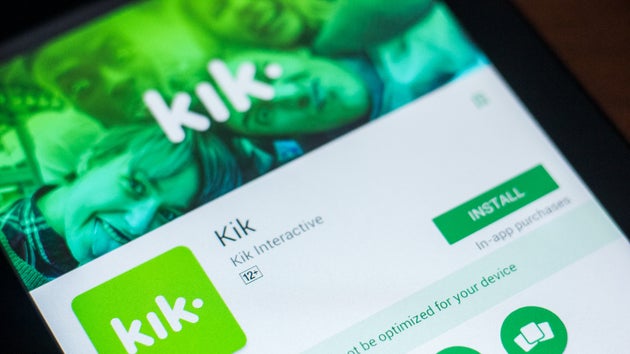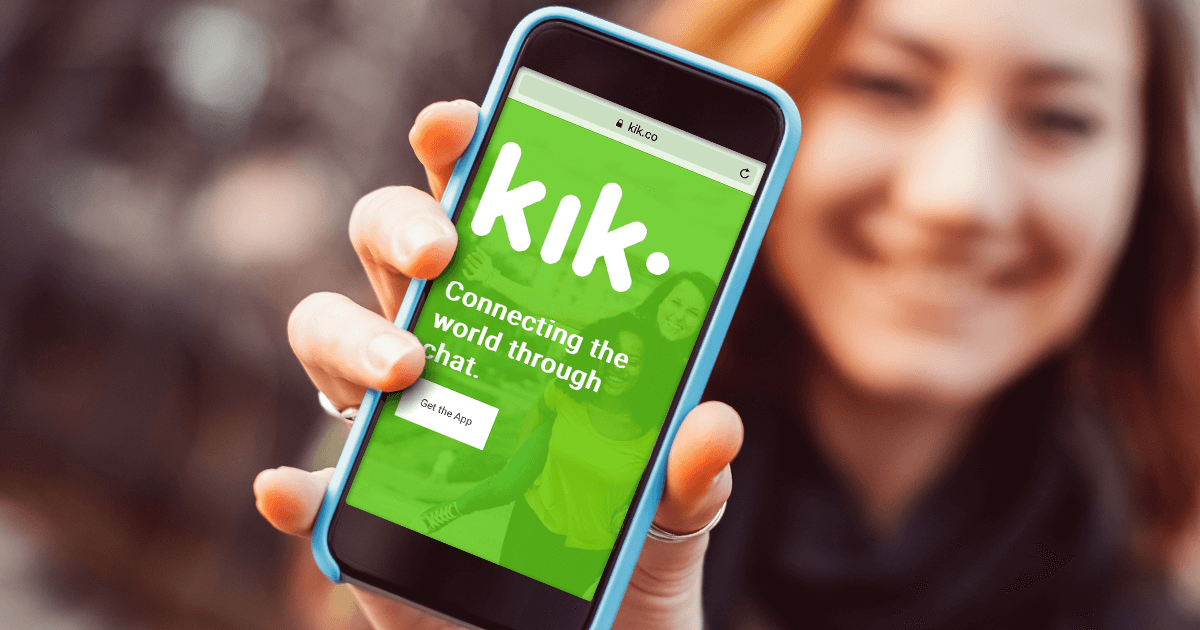Unpacking Kik refers to the process of decoding and understanding the encrypted messages sent on the Kik messaging app. This app reached 300 million registered users in 2016 and is mostly popular among teens thanks to its core feature of anonymity
What is Kik?
Kik is a cross-platform messaging app, popular among teenagers and young adults, that allows users to engage in group chats or direct messages. By signing up with an email address and password, users can easily connect with friends and family through username searches, Kik code scanning, or granting access to their address book. Kik is known for its wide array of multimedia-sharing options such as images, emojis, sketches, GIFs, etc.
However, one of Kik’s most concerning features is the ability to chat with strangers through public groups, accessible by using the search function within the app. Despite its potential risks, Kik has become increasingly popular as an alternative to SMS services like iMessage and WhatsApp, and even as a means to find potential romantic connections.
A Brief History of Kik and its Purpose

Kik, a popular instant messaging app, was founded in 2009 by a group of students at the University of Waterloo in Canada. The app gained rapid popularity, reaching 1 million users in just 15 days, and has since evolved into a widely used communication platform among young adults and teenagers.
- Purpose: Kik allows users to send and receive text messages, and multimedia content, and engage in group chats or live video calls. Unlike other messaging apps, Kik requires only an email address and password for registration, making it less intrusive and more private.
- Cross-Platform: Kik is available for Android and iOS devices, providing seamless communication across different mobile operating systems.
- In-app Features: Kik users can search for friends by scanning Kik codes (similar to QR codes) or importing from their device’s address book.
- Multimedia Sharing: Kik supports the sharing of images, emojis, GIFs, and sketches during conversations, encouraging more vibrant and expressive communication.
- Chatting with Strangers: Kik’s public chat groups enable users to find new friends and explore shared interests through hashtag-driven conversations. This feature also gained Kik an infamous image as it allows users to connect with strangers easily.
Origins and Evolution of Kik
- Birth in Canada (2009): Kik Messenger was created by Kik Interactive, a group of students from the University of Waterloo in Ontario, Canada.
- Global popularity: As of 2016, Kik had 300 million registered users worldwide, including an estimated 40% of teenagers in the U.S.
- Anonymity feature: Kik allows users to register without a phone number, ensuring their privacy and making it particularly popular among teenagers and those concerned about privacy.
- Social media integration: Kik users can invite friends and family via SMS, email, and social media platforms like Facebook and Twitter.
- Group chats and bots: Kik offers group chat functionality, as well as the ability to add bots for quizzes and games.
- QR-like codes for easy connection: Users can connect by scanning each other’s unique Kik codes.
- Continuous evolution: With regular updates and new features, Kik remains a popular messaging app for users around the world.
Understanding Kik as a Messaging App
Kik Messenger, a free instant messaging and social networking app, uses your smartphone’s data plan or Wi-Fi connection to send messages to other Kik users, bypassing traditional SMS. The app is available on Android and iOS devices and targets a teenage demographic with an emphasis on privacy and anonymity. Unlike other messaging services, Kik does not require users to register their phone number, only their name and email, allowing users to maintain a private presence identified only by their username.
With features like customizable notifications, live typing indicators, and the ability to join public groups and invite friends via social media, Kik distinguishes itself from other messaging apps. The platform has grown to over 300 million registered users, with an estimated 40% of teenagers in the U.S. using Kik as of 2016.
Kik’s Role in Social Networking
- Instant Messaging: Kik is a popular cross-platform instant messaging app, allowing users to communicate in group chats or direct messages.
- Multimedia Sharing: Users can easily share images, emojis, sketches, and GIFs, as well as engage in live video chats, similar to Skype.
- Connecting with Strangers: Kik allows users to chat with strangers by searching public groups through hashtags or by scanning Kik codes.
- Online Dating: Kik has been suggested as a platform for connecting with like-minded people for dating purposes.
- Easy Sign-up: Signing up to Kik requires only your name, email, and password.
- Internal Browser: Kik offers an internal browser for users to access additional apps, games, and even dating-style apps.
- Parental Concerns: Due to the ease of chatting with strangers, parents are advised to monitor their child’s usage of Kik and be aware of potential risks such as cyberbullying and sharing inappropriate content.
Risks associated with using Kik
- Anonymity: Kik’s main feature is user anonymity, allowing people to communicate without revealing their actual names or phone numbers. This makes it hard for law enforcement and parents to obtain any information about users, leading to safety concerns.
- Paradise for predators: Kik’s anonymity features have made it a haven for predators who exploit vulnerable teens. Crimes facilitated via this platform have included sharing sexually explicit materials, grooming young teens, and child exploitation.
- Lack of security measures: Despite Kik’s awareness of the dangers it poses, no effective security measures have been established. Users are encouraged to report issues but the amount of inappropriate content on the platform remains daunting.
- Parental ignorance: Perhaps the scariest risk for some is that 57% of Kik users are aged 13-24, with many parents not even aware of the app’s existence, making it even more difficult to protect and monitor their children’s smartphone usage.
Steps to Take to Protect Yourself on Kik
- Choose a strong password: Create a unique password containing a mix of upper-case letters, lower-case letters, numbers, and special symbols to secure your Kik account.
- Limit personal information: Share your Kik username and code only with trusted individuals, and avoid giving out personal details, such as your address, email, or phone number.
- Manage incoming messages: Be cautious when engaging with strangers on Kik. Use Ignore/Delete options and block or report spam messages as needed.
- Be selective with contacts: Only add people you know and trust to your Kik contacts list.
- Don’t share explicit content: Avoid sending intimate photos or sensitive information that could be used against you.
- Be cautious with links: Don’t click on links from unknown sources, as they may contain scams, malware, or phishing attempts.
- Use ClevGuard: Install a professional security tool, like ClevGuard, to protect your Kik account from hackers and safeguard your privacy.
- Educate yourself: Stay informed about Kik updates and security features to ensure you’re utilizing the app safely and responsibly.
Conclusion
In conclusion, Kik Messenger was a popular messaging app, particularly among teenagers in North America, that provided anonymity by allowing people to register and use it without providing a phone number or other credentials. However, the app faced controversies and had to shut down to focus solely on its Kin cryptocurrency, developed by Kik Interactive.
References:
https://www.makeuseof.com/tag/what-is-kik/
https://www.webwise.ie/parents/explainer-what-is-kik/
Hello, I’m Herman C. Miller, the founder of InternetPKG.com, your ultimate destination for all things Mobile Internet and Telecommunication Services. With a BSc in Telecommunication Services and over 6 years at AT&T, my passion for the industry led to this platform. At InternetPKG.com, we prioritize keeping you informed with the latest package offers, ensuring our content stays current. Our team, including a dedicated Internet Package and Mobile Data Plans Researcher, tirelessly researches emerging trends, identifies market opportunities, and provides expert product recommendations.
